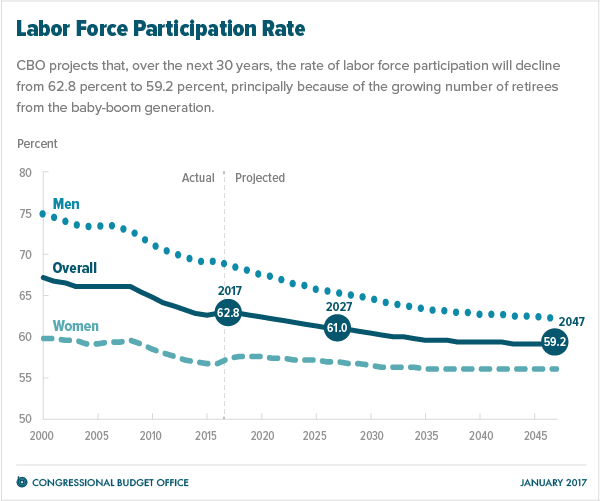
Can We Achieve 3% to 4% GDP Growth?
Basically, economic growth comes from an increase in the labor force and productivity. If you can get more work from more people you get more economic growth. By 2060, roughly 1 in 4 American will be over age 65. Today, it is roughly in 1.5 in 10.1 Labor participation peaked in the late 1990s. The trend is not getting in any better. By 2050, it is projected that ONLY 58% of the population in the U.S. will be working.2
Perhaps we have a major productivity surge where technology creates more GDP. This is not unprecedented; consider railroads, machines, factories, mass production, electricity, telecommunications, cars, air travel, computers, etc.
The problem is that technology generally displaces workers, so any improvement in labor productivity will likely put older people out of work. Almost 1 in 2 people won’t be working in 40 years. 20 years ago it was 1 in 3. We live in a society where 3 people pay to support 1 retiree, and that number is going to 2 for 1 in 10 years.
Demographics are the crux of the story. Western Europe, Japan and the United States are getting old.3 Why? The richer you are the less children you have or need to have. A married couple in the U.S. is having less than 2 children. So when they die, they are not replacing themselves. In the least developing nations, in places like Africa and Asia, they are still having 4 to 7 children.
Without planning, smart incentives, strategic investments, retraining programs – it is going to be very difficult hit 3%+ economic growth in my view. The reality is we need more people working harder and more efficiently. That should be the focus of economic policy.
1 U.S. Census Bureau, 2017
2 FRBSF, Economic Letter, November 2018
3 Pew Research Center, 2012


